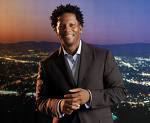CNN has aired its long form piece Black in America as reported by Soledad O'Brien. Tackling something like this is remarkable, yet foolhardy at the same time. Remarkable for trying to shed light on race issues the so often get swept under the rug on the cutting room floor of major TV networks. Foolhardy for trying to do more than scratch the surface by repeatedly setting off explosions in a field of stereotypical land mines.
Blacks, Hispanics, Asians, Native American and Whites in America know what their experience is and members of these groups tend to know what the experience is like for others of their race who are in the same or different socio-economic, geographic and cultural groups. Oftentimes people of mixed race or those who have family members of different races have an understanding of navigating race in America from that perspective.
Series like CNN's Black in America try to explain race to those who do not understand and lack perspective, but it does so in a way that people may end up with a misunderstanding because the piece makes sweeping generalizations. But that is why we shouldn't depend on it too much. It goes back to the responsibility of parenting and other methods of socialization to shape our thoughts — not just the media.
At the UNITY journalist convention in Chicago on July 24 O'Brien said Black in America was done to start a conversation. Hopefully it has done that and hopefully the talking points draw from many references and sources other than CNN.
A lot of aspects of blacks in America were not covered in the piece. The best and most insightful interview O'Brien did in the piece was with Spike Lee. To get a more authentic, less staged insight into Black America don't forget that "good" art imitates life. I recommend Spike's movies, namely "School Daze" and "Do the Right Thing."
In "School Daze" Black men who are college students at Mission College are confronted by townies who question their "blackness" and they flip the question right back on them.
For more of the big picture on race in America "Crash" is a must see . . . a least twice.
The point is lets not wait until CNN does Hispanics in America, Middle-class White women in America, Homosexuals in America, Unemployed College Graduates in America for us to start trying to understand the intricacies of countless groups.
Tuesday, July 29, 2008
Color in America
Subscribe to:
Post Comments (Atom)












2 comments:
I was able to catch 3 parts of the CNN series, Black in America. While I thorughly enjoyed the piece on Dr. King, I felt the pieces on black men and black women were lacking. I completely agree that those who do not have an understanding of what it means to be a different race in America WILL form misunderstandings from this piece. On the other hand, we complain that blacks in America are not honored and/or treated with thee respect, dignity, and/or the equality that we deserve.....can we really fault CNN for attempting to address our complaints? All in all, I agree that the series will DEFINATELY start conversations that should be had or should have been had in the past among caucasians and people of color. As Soledad stated, this WAS it's major purpose.
i liked you're blogpost. i kinda wanted you to go more into why it was "repeatedly setting off explosions in a field of stereotypical land mines." Nice language =-) but i wanted to know what you thought was stereotyped because i think there is validity to everything that she covered stereotyped or not and in order to give a comprehensive report it was important that she didnt just cover the good ya know? maybe your comment wasn't meant to come off negative but it kinda did...
Post a Comment